Top speed 241 km/h Length 16 m | Wingspan 13 m First flight April 10, 1979 | |
 | ||
Arcus westland 30 mei 2010
The Westland 30 is a British medium helicopter based on the Westland Lynx. Although Westland Helicopters foresaw a market for the type in VIP, passenger and cargo transport, and off-shore support operations, production remained limited, ending in 1987 after only 41 had been built.
Contents
- Arcus westland 30 mei 2010
- M4a1 westland 30 2
- Design and development
- Operational history
- Variants
- Operators
- Aircraft on display
- Specifications 30 160
- References
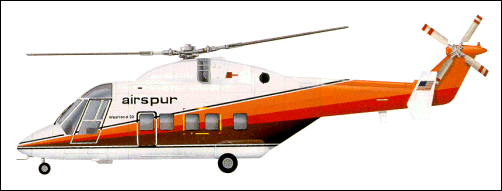
M4a1 westland 30 2
Design and development
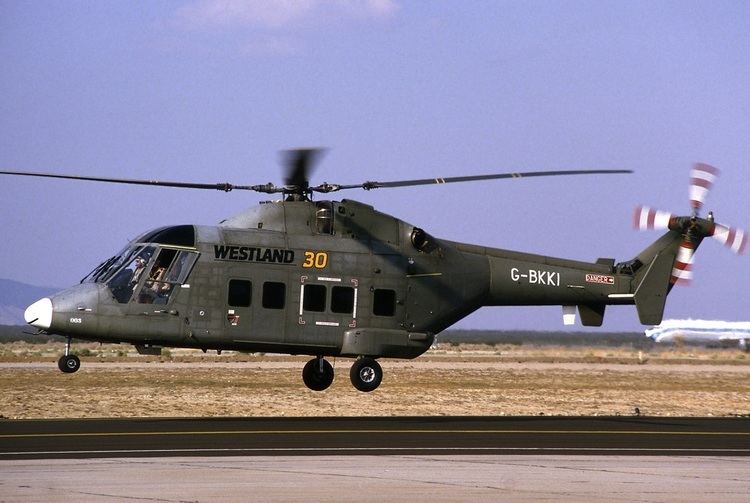
Westland was investigating replacements for its Wessex and Whirlwind helicopters. It studied a larger version of the Lynx for civil use. The civil helicopter was originally named "WG-30 Super Lynx" before being changed to "Westland 30". It shared transmission, rotor blade and other components with the Lynx, but had a new airframe. The Westland 30's rotor system is larger with slower-turning four blade main rotor assembly. The fuselage is a conventionally built structure of aluminium while composites are used for the tail boom.
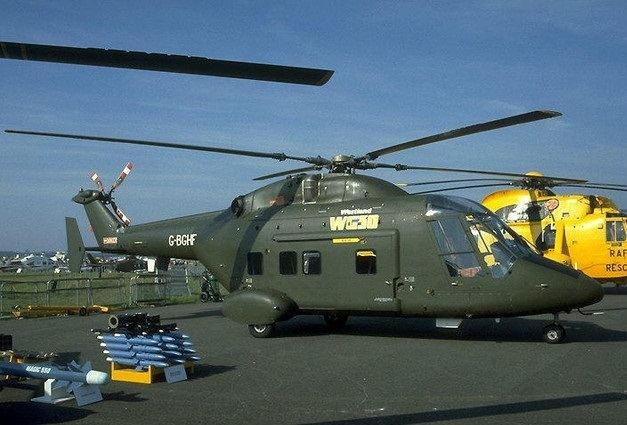
Westland initially meant the WG.30 for air ambulance and tactical transport military uses. As a civilian carrier, fitted with airstair or sliding doors it could carry up to 22 passengers with a baggage compartment at the rear of the fuselage. Fitted for offshore work the Westland 30-100 could operate with a 250 km radius of action (227 kg fuel) carrying nine passengers out and 13 home. As a military aircraft it could carry 14 troops with equipment, 17 without or six stretchers and medical attendants.
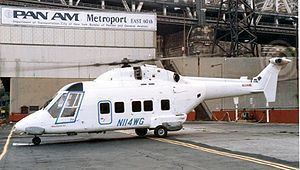
The prototype WG30 made its first flight on 10 April 1979, and made an appearance at the Paris Air Show the same year. Production of the first model, the Westland 30-100, began in 1981, receiving British Civil Aviation Authority (CAA) type certification in December 1981, with American (FAA) certification following in December 1982. This was followed in 1984 by the 30-160 with uprated engines.
Operational history
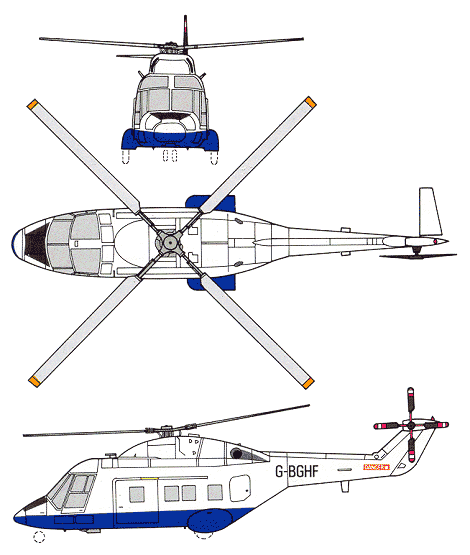
The first of three Westland 30-100s was delivered to British Airways Helicopters at Beccles on 6 January 1982, to support gas rigs in the southern sector of the North Sea. The type was later used on the scheduled passenger service between Penzance and the Isles of Scilly, and remained in service when the company became British International Helicopters in 1986.
In the USA, Airspur Helicopters Inc. acquired four Westland 30s on lease to operate scheduled passenger flights in the Los Angeles area, beginning on 9 May 1983. Omniflight Helicopter Services operated the type on behalf of Pan Am, linking John F. Kennedy International Airport with Pan Am's heliport at East 60th Street in central Manhattan. Services ceased on 1 February 1988, and the helicopters were returned to Westland; most ending up at The Helicopter Museum in Weston-super-Mare.
The chief operator of the type was Pawan Hans of India. The British government agreed with India to supply 21 Westland 30s for oil exploration duties using a British grant of 65 million pounds. India was reluctant to accept the deal until it was made clear that the aid would not otherwise be forthcoming. The aircraft were delivered to Pawan Hans between 1986 and 1988 for offshore operations on behalf of the Oil and Natural Gas Corporation Limited (ONGC). A similar number of SA 365N Dauphin helicopters was supplied by France. It was soon found that the Westland helicopters were ill-suited to Indian conditions, and after two fatal accidents, the fleet was grounded in 1991. The 19 surviving Westland 30s were sold to a British company, but after six had been shipped to the UK, the deal fell through, and the aircraft are believed to remain in storage in the UK and India.
Variants
Operators
Aircraft on display
Specifications (30-160)
Data from Westland Helicopters W30 history page, Jane's All The World's Aircraft 1982–83.
General characteristics
Performance
